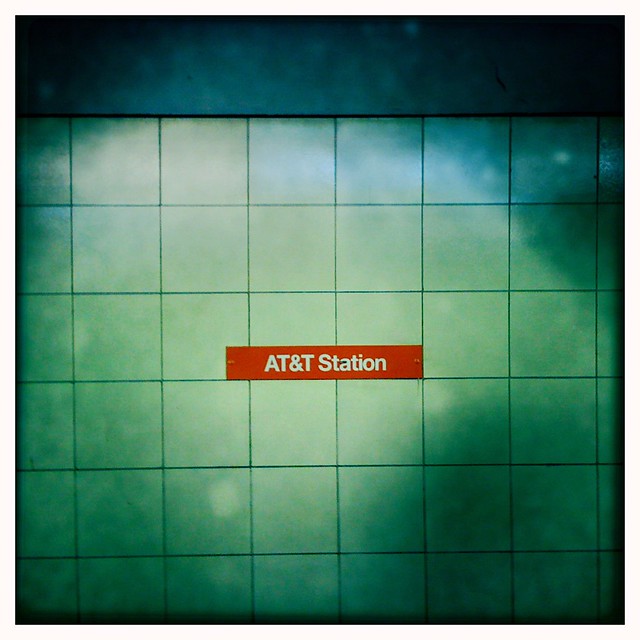
Will this Transitway see the light of day soon? (Image via NYC DOT)
By the time — or perhaps if — the 34th Street Transitway becomes a reality, the project will have taken at least four years from gestation to reality. On paper, the idea is not revolutionary. The city would eliminate some traffic lanes, install dedicated bus lanes and improve transit across a stretch of the city that sees tens of thousands of bus passengers per day. Who could object?
In reality, improving bus service — a laudable goal in New York City where buses are known not for speed but for their snail’s pace — riles up a vocal minority of residents who feel threatened by improvements to what they view as a second-class means of transportation. It brings out the worst in NIMBYism and leaves planners struggling to defend clear improvements they shouldn’t have to struggle to defend.
Over the last few years, Community Board members have come up with every excuse in the book to bemoan the Transitway. The underlying complaint — one that doesn’t come out much anymore — involves direct car access to buildings. Originally, residents complained that taxis wouldn’t be able to provide door-to-door service if the Transitway removed two lanes of traffic. When that sounded selfish, residents started talking about the blight a row of buses would cause (as opposed to, say, bumper-to-bumper traffic). They talked about how the Transitway would be bad for trees, how emergency vehicles would get stuck on 34th St., how unsupervised children would stray into the path of an oncoming bus. You name it; they said it.
A few months ago, I explored how ridiculous these arguments are, but still, the vocal minority speaks out. The city, meanwhile, will drag out the planning process. Per DOT’s project timeline, this spring, the city will propose another preliminary corridor design while soliciting community feedback. In the summer, they’ll complete the environmental review and traffic analysis. Maybe by April 2012, we’ll have a Transitway that runs a few miles across Manhattan. This process is akin to pulling teeth in slow motion.
With that said, forgive me if I’m less than enthusiastic about the latest news. The M34, says Pete Donohue, will soon be equipped with a pre-boarding fare payment system. In an effort to speed up bus service along the city’s slowest route, the MTA will introduce Select Bus Service-like pre-boarding fare card readers along 34th St. well ahead of any potential Transitway. “The introduction of off-board fare collection does a lot to help speed travel by cutting down significantly on the amount of time a bus sits in the bus stop,” Transit head Thomas Prendergast said.
Don’t get me wrong: All of the city’s buses should have pre-boarding fare payment systems. Speeds would improve dramatically across New York. Yet, the MTA’s current implementation is an intractable solution to a big problem. If 34,000 riders per day are taking buses across 34th St., that’s 34,000 proof-of-payment receipts. That, in and of itself, carries a steep cost and isn’t environmentally friendly. We simply need a better solution across the board.
Recently, as Scott Stringer has started to adopt the concerns of the 34th St. NIMBYs, Cap’n Transit has begun to question the planning approach for the Transitway. Why, he asks, aren’t those passengers who come from Queens and head to 34th St. being courted for views as well? What about those other users? He writes:
If you read pro-transit blogs and tweets, you would know that the buses contain thousands of bus riders: about 33,000 trips per day. Apparently there has been some representation of these riders by the Straphangers Campaign, but the meetings seem to be completely dominated by people who identify as either drivers or taxi riders.
Other than the Department of Transportation staff themselves, no one has acknowledged that the majority of these riders don’t even live in Manhattan. There are more than twenty express bus routes from central and eastern Queens, and a little bit of southern Brooklyn, that bring thousands of riders into Midtown every day. They travel down the Long Island Expressway through the Queens-Midtown Tunnel, west on 34th Street, north on Third or Sixth Avenue, east on 57th Street, back across the Queensboro Bridge, and down Queens Boulevard…
There have been at least five meetings about this project in Midtown Manhattan, but to my knowledge there have been no meetings in Queens. There is a Community Advisory Committee for the project, but are there any representatives from Fresh Meadows or Bayside? I certainly haven’t heard from them in the news, the blogs or the Twitter feeds. It’s true that this is a pretty good case of a situation with concentrated costs and diffuse benefits, and these often get hijacked by the people who perceive themselves as having something to lose.
In a post this evening about the Staten Island interest in better 34th St. bus service, the Cap’n notes that some Queens residents have started to contact their City Council members. They should be included in the process. After all, bus improvements in Manhattan impact more than just the people who live on or near the chosen routes.
Ultimately, the 34th St. Transitway is a prickly route for transit advocates. The city isn’t great at keeping traffic moving on nearby one-way cross streets, and many would have preferred to see 125th St. pegged as the first Transitway. But buses that use 34th St. have a total ridership of over 40,000 per day. Even though some of those riders alit before Manhattan, a great many express bus riders take the trip to 34th St. and would benefit tremendously from fast dedicated bus lanes.
Improved transit comes with the need to take a step toward change. Can the city overcome that neighborhood resistance? Should it? I think so.



